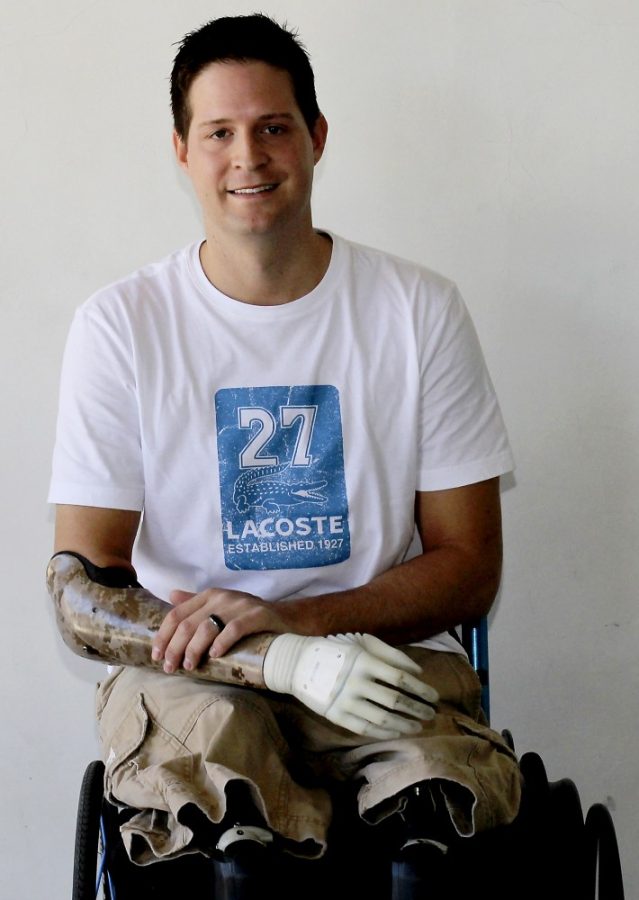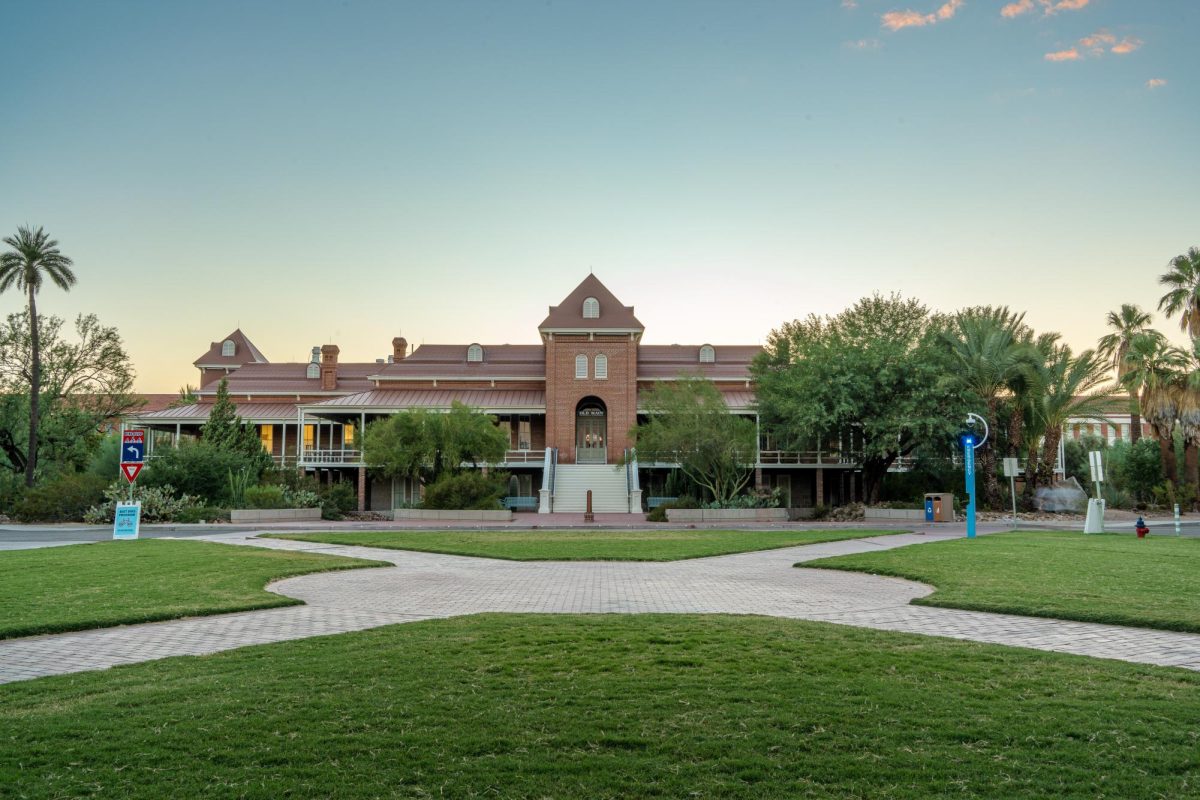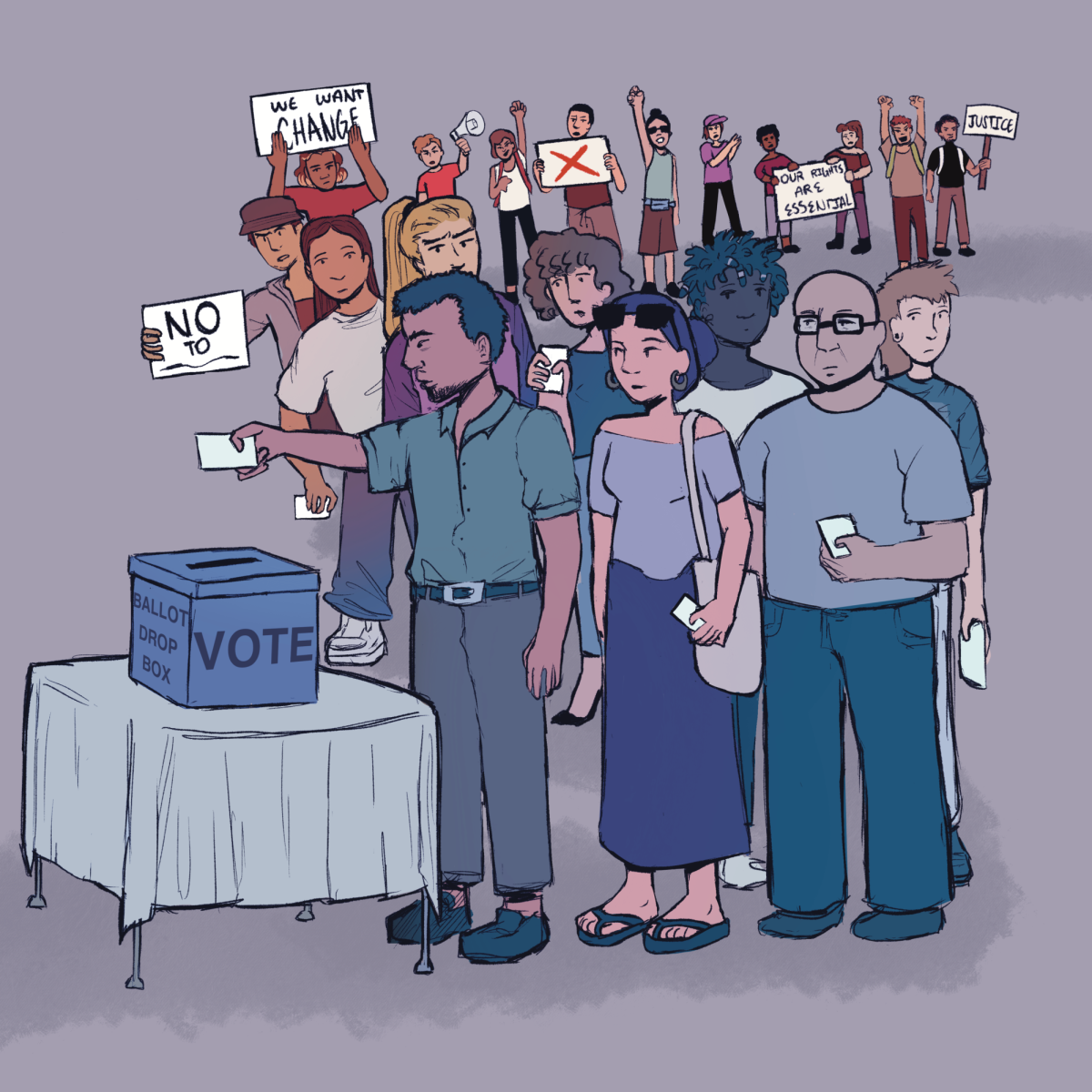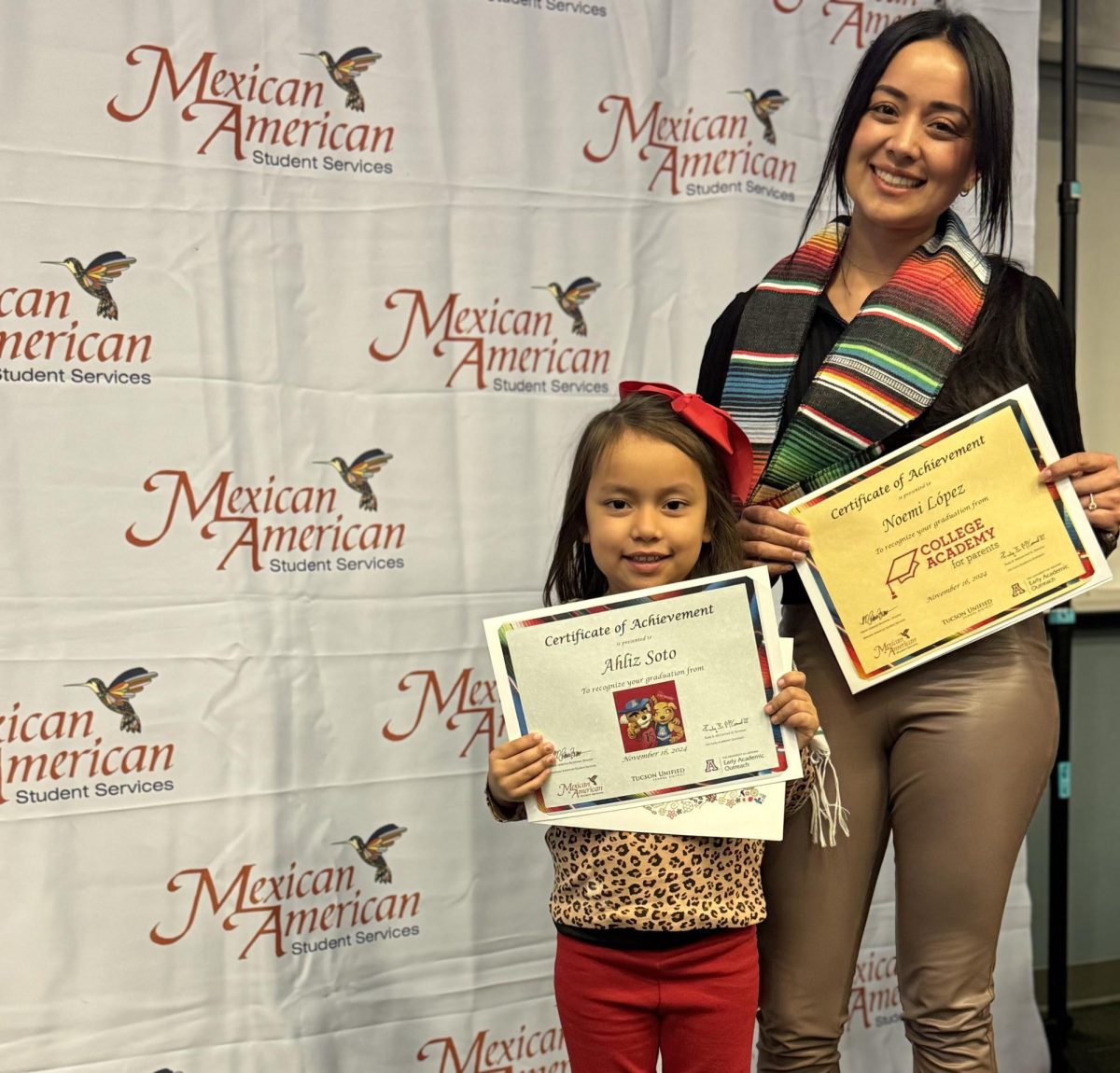Losing his right arm and both legs in battle did not deter Brian Kolfage, 30, from coming to the UA to study architecture.
After being wounded while serving in Iraq, Kolfage sees architecture as a way to make living more convenient for others. Now in his third year as an architecture student, Kolfage said he has refused to let his disability hold him back.
On Sept. 11, 2004, while stationed for a second term in Iraq, a 107-millimeter mortar shell landed near Kolfage, “nearly liquefying his two legs and slicing his right arm, near the wrist, and left thumb.”
“I was laying on the ground, unconscious, for the first 30 seconds. Then I was trying to figure out what had happened. I tried standing up, but nothing was working at all,” he said. “I thought I was dreaming.”
Kolfage was in surgery for more than eight hours, going through nearly 21 pints of blood. After being stabilized, he was put on a C-17 aircraft retrofitted as an air hospital and flown to Germany.
From September 2004 to February 2005, Kolfage underwent 16 surgeries, washing out the remnants of sand and metal from his body. One of the surgeries replaced his left thumb, requiring doctors to remove a bone from his right hip.
While recovering, Kolfage saw other military personnel who had suffered traumatic brain injuries in combat and no longer remembered their spouses or families.
“When I saw that, it clicked in my head,” he said. “Your limbs are not a necessity, but your brain is. I was motivated to move on.”
When Kolfage returned to the U.S., he decided to move to Tucson. He didn’t want just a boring desk job, he said, so he decided to pursue his dream of having a career in architecture.
“Being in the military I was kind of rebellious and anti-school, and I think going to school you learn so much stuff, and the way everything works in the world. You get a broader understanding of the world,” he said.
During his first year, it would take Kolfage twice as long to do his assignments as he needed to learn how to use his left hand. Although it was time consuming, after Kolfage got through that first year, he said it was “pretty much a cake walk through everything else.”
Kolfage is now one of the top students in his class.
“What I have really learned since starting this program is that if you try hard, you can really do what you want to do. Seems kind of cliché, but it’s a fact,” he said.
Michael Kothke, a lecturer in the College of Architecture, spoke highly of Kolfage’s perseverance.
“Our profession requires you to be open to exposing yourself to risk and challenge and failure,” Kothke said. “Brian is always willing to lay his cards on the table. He’s a leader in that regard. He puts himself out there.”
Siri Trumble, an adjunct lecturer who was Kolfage’s first architecture teacher at the UA, said that Kolfage “quickly emerged as one of the top draftsmen. He’s impeccable.”
Kolfage said that after he graduates, he wants to focus on residential architecture.
“Doing stuff that makes other people’s lives easier is definitely something I want to do,” he said. “I just find that for myself there is a lot of stuff I have to overcome with architecture, like going in and out of buildings, and there are so many man-made things that make it harder for people like myself.”









